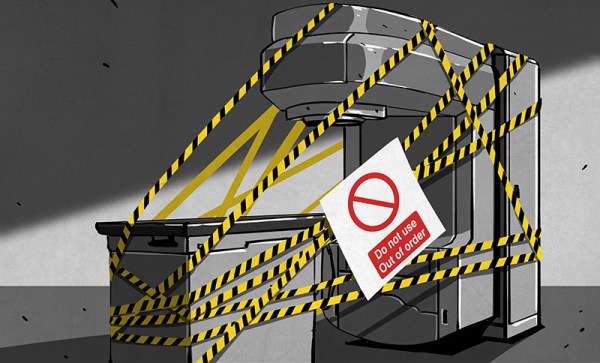Say what you will about Tesla, but there’s little doubt that the electric vehicle maker inspires a certain degree of fanaticism in owners. We’re used to the ones who can’t stop going on about neck-snapping acceleration and a sci-fi interior. But the ones we didn’t see coming are those who feel their cars are so bad that they need to stage a hunger strike to get the attention of Tesla. The strike is being organized by a group of Tesla owners in Norway, who on their website enumerate a long list of grievances, including design defects, manufacturing issues, quality control problems, and customer service complaints. It’s not clear how many people are in the group, although we assume at least 18, as that’s the number of Tesla cars they used to spell out “HELP” in a parking lot. It’s also not clear how or even if the group is really off their feed, or if this is just a stunt to get the attention of Tesla honcho and notorious social media gadfly Elon Musk.
Therac-252 Articles
Killed By A Machine: The Therac-25
The Therac-25 was not a device anyone was happy to see. It was a radiation therapy machine. In layman’s terms it was a “cancer zapper”; a linear accelerator with a human as its target. Using X-rays or a beam of electrons, radiation therapy machines kill cancerous tissue, even deep inside the body. These room-sized medical devices would always cause some collateral damage to healthy tissue around the tumors. As with chemotherapy, the hope is that the net effect heals the patient more than it harms them. For six unfortunate patients in 1986 and 1987, the Therac-25 did the unthinkable: it exposed them to massive overdoses of radiation, killing four and leaving two others with lifelong injuries. During the investigation, it was determined that the root cause of the problem was twofold. Firstly, the software controlling the machine contained bugs which proved to be fatal. Secondly, the design of the machine relied on the controlling computer alone for safety. There were no hardware interlocks or supervisory circuits to ensure that software bugs couldn’t result in catastrophic failures.
The case of the Therac-25 has become one of the most well-known killer software bugs in history. Several universities use the case as a cautionary tale of what can go wrong, and how investigations can be lead astray. Much of this is due to the work of [Nancy Leveson], a software safety expert who exhaustively researched the incidents and resulting lawsuits. Much of the information published about the Therac (including this article) is based upon her research and 1993 paper with [Clark Turner] entitled “An Investigation of the Therac-25 Accidents”. [Nancy] has since published updated information in a second paper which is also included in her book.












